"KODIAK"
A kayak designed by Hi Sibley.
This kayak is not a replica -- or is it? It isn't an original, or is it? Its definitely not a 'Kodiak' or Pacific-Yupik/Sugpiaq kayak.
Its not even 'Alaskan,' assuming that Sibley was not born in Alaska. It is a kayak . . . I'm pretty sure.
Hi Sibley wrote many 'do-it-yourself' articles for Popular Mechanics Magazine and others over the course of some fifty years or so. During this time he designed several kayaks and wrote instructions on how to build them. His plans for the kayak bearing the very Alaskan name "Kodiak" show a kayak with a bow hand-grip shaped like a King Island kayak. . . . and the stern grip also shaped like the bow of a King Island kayak. Here, any resemblance to an Alaskan kayak ends. So if its not really Alaskan, why is it here? Briefly, I don't have a section for 'Alaskan kayak-influenced non-replicas.'
The plans I used were purchased from the Shellback Library-- David N. Goodchild's extensive re-issues of classic nautical writings.
The plans originally appeared in Sports Afield's Boatbuilding Annual for 1960.
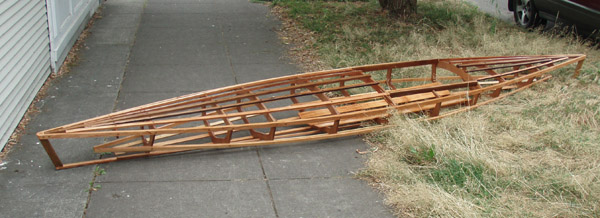
So here is my "Kodiak" from Sibley's plans-- a replica perhaps if I'd followed the plans to the 'T.' Or perhpas it could
be considered an 'original', in the sense it was made from the designer's article by a member of the same
broad cultural group the article had been intended for. This kayak and many designs like it are what people were building in their garages
around the mid 20th century.
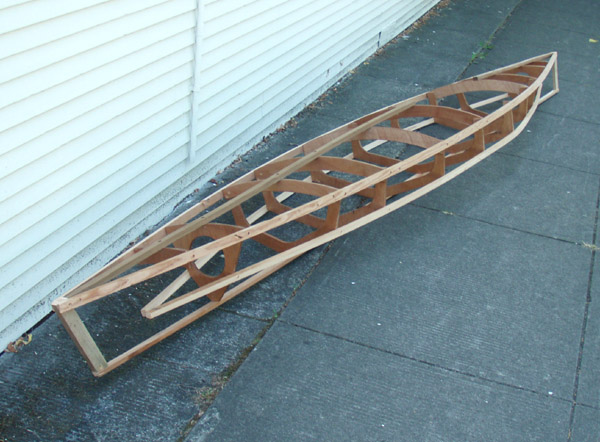
This shows the preliminary stringers in place: The keelson, two chines, a deck stringer, and the gunwales.
The frames are 1/2" marine plywood.
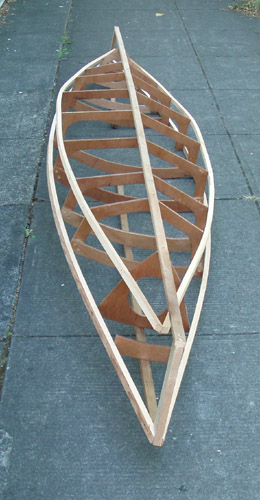
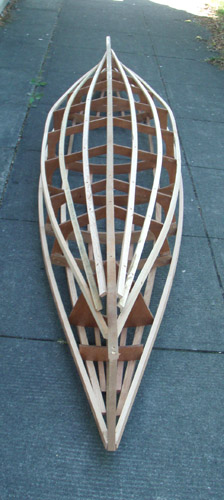
These photos show the bottom of the kayak with preliminary stringers in place (left), and with
all the stringers in place. All joints are fastened with brass screws.
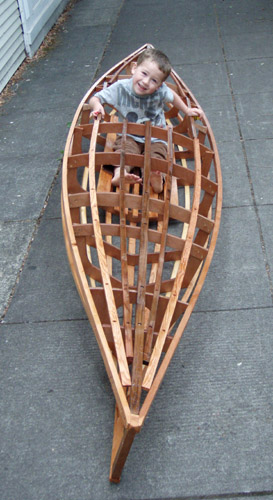
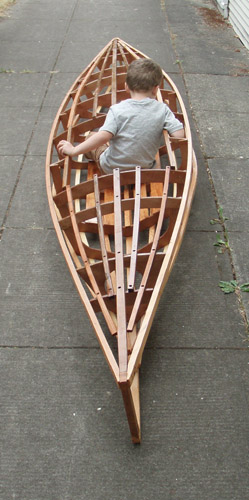
Two views of the finished frame with diminutive and effervescent model-paddler inside.
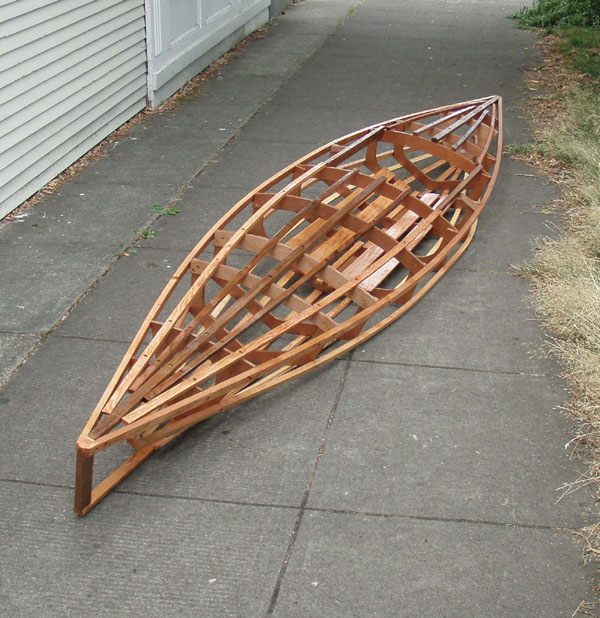
The completed frame. The plans I worked from were minimalistic-- only 4 pages total. They weren't perfect instructions, but
the frame came out okay. The station-distances for the formers made for a very unfair sheerline (viewed en-plan), but it
was easy to bump frames fore or aft a tad to ensure fairness. Alas, doing so on the sheer allowed for an un-fair
chine line behind the cockpit, no doubt visible in these pictures. Oh well... life's unfair. Another thing with the plans:
The chines did not land anywhere near the stem-pieces-- the drawings show them neatly alighting on the stems. So
I just left them hanging in space, where they wouldn't protrude into the skin covering.
Another thing the astute will notice is that I veered from the plans and made a rectangular cockpit opening. The plans called for a
white-pine decking adjacent the cockpit area with a bent coaming made of masonite. I figured the roomier cockpit would be
more fun, plus I can take my son out with me.